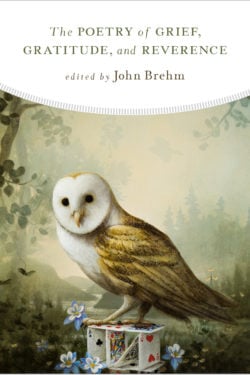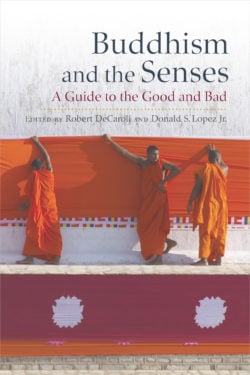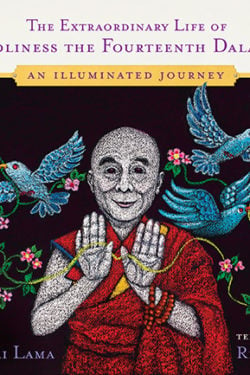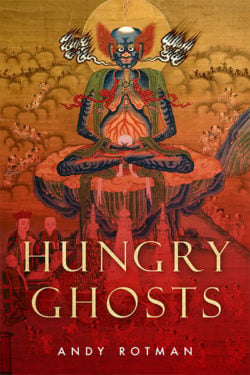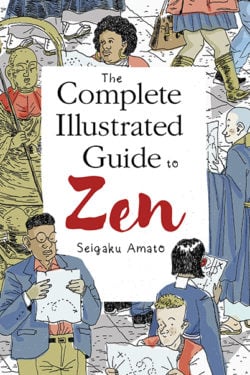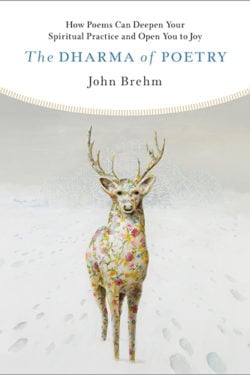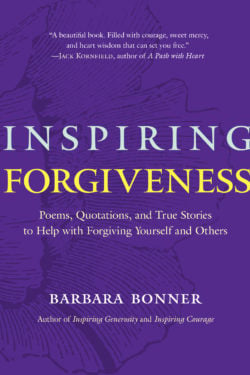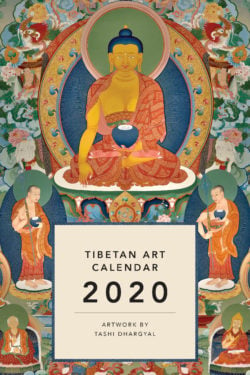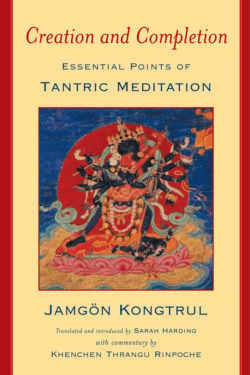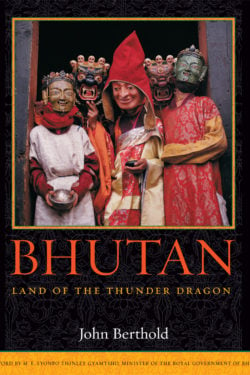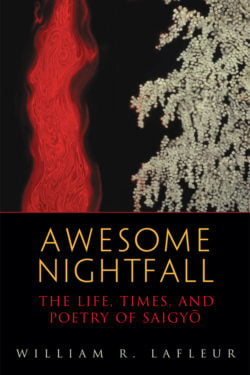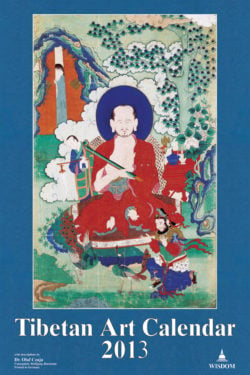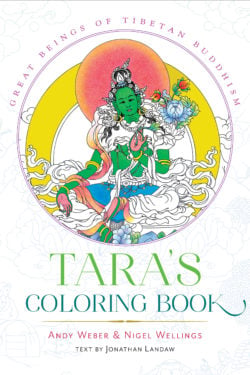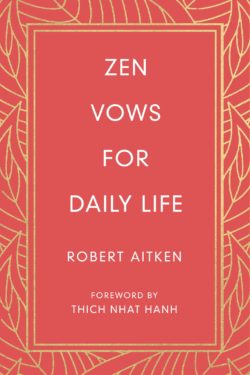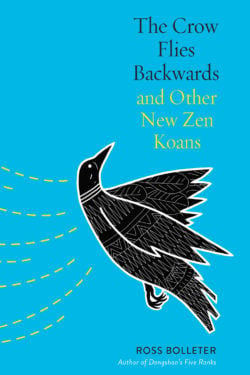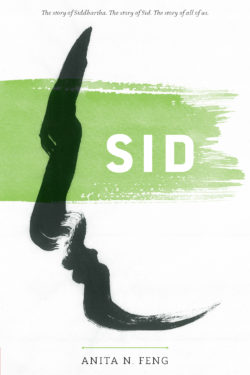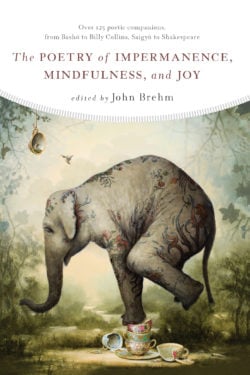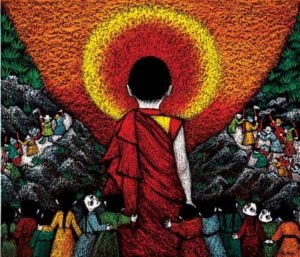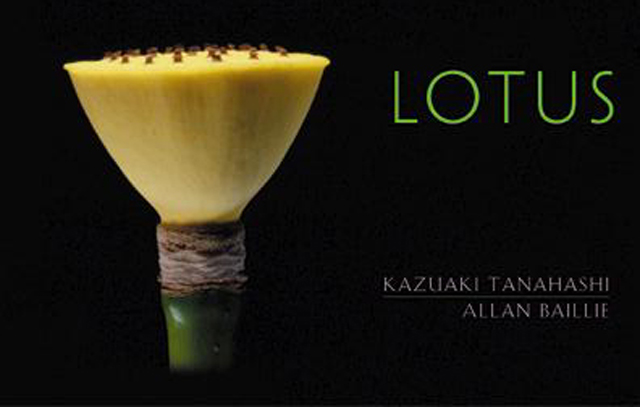
LOTUS
In Lotus, Kaz Tanahashi and photographer Alan Baillie provide a super-close-up view of one of world culture’s most famous flowers. Baillie’s carefully assembled collection of photographs of the lotus capture the legendary flower throughout its “life,” as it were: from seed to brilliant flower, and finally, into dust. Some of Baillie’s photographs rival the best of the genre; these are truly “classical” in their approach. But he also provides a wholly fresh view, providing surprising images from each stage of the lotus’s existence. Readers will alternate between swooning, and exclaiming, “I can’t believe that’s a flower!”
Editor Kaz Tanahashi, an expert of Asian cultures and storytelling, offers the perfect complement to the photography here. His introductory frontmatter tells of the lotus’s prominence in various cultures, and the mystical and practical meanings that the flower continues to embody. Next to appear are his carefully selected poetry and prose-extractions, chosen to match Baillie’s photographs, on facing pages. Each illuminates the other, making Lotus a gratifying way to relax, please the eyes, and feed the mind.
- Paperback
- 128 pages, 5.50 x 8.50 inches
- $14.95
- ISBN 9780861712779
Discover More
The Poetry of Grief, Gratitude, and Reverence
Explorations on a journey through the darkest and brightest moments of our lives, the poems gathered here are explorations of loss, of thanksgiving, of transformation. Some show a path forward and others simply acknowledge and empathize with where we are, but all are celebrations of poetry’s ability to express what seemed otherwise inexpressible, to touch deep inside our hearts—and also pull ourselves out of our selves and into greater connection with the world around us.
Includes poems by
Rainer Maria Rilke, Robert Frost, Elizabeth Bishop, Czesław Miłosz, Seamus Heaney, Billy Collins, Joy Harjo, Danusha Laméris, Ada Limón, Kevin Young, Arthur Sze, Ellen Bass, Li-Young Lee, Natasha Trethewey, and many more, plus the editor’s essay on appreciative attention.
John had recorded guided poetry meditations to accompany several of the poems found in this anthology. To learn more and listen to these meditations, please click here.
Listen to a Wisdom Dharma Chat with John and host Daniel Aitken recorded in October 2023.
Buddhism and The Senses
Across Buddhist traditions, the five senses—sight, sound, smell, taste, and touch—are perceived both positively and negatively. Share eminent scholars’ fascination and deep insight into what makes a sensuous experience good or bad.
Following the exhibition Encountering the Buddha: Art and Practice across Asia at the National Museum of Asian art, ten eminent scholars present their insights into Buddhism’s fascinating relation with the five senses (sight, sound, smell, taste, and touch), which careens between delight and disgust, rarely finding a middle way. While much of Buddhist literature is devoted to overcoming the attachment that dooms us to rebirth in samsara, primarily by deprecating sense experience and showing that whatever brings us sensual pleasure leads only to all manner of physical and mental pain, in texts such as the Lotus Sutra, sensory powers do not offer sensory pleasure but rather knowledge, clear observation, and ability to preach the Dharma. Considering such religiously and historically contingent ambiguity, this volume presents each of the five senses in two instantiations, the good and the bad, opening up the discourse on the senses across Buddhist traditions.
Just as the museum departed from tradition to incorporate sensory experiences into the exhibition, this volume is a new direction in scholarship to humanize Buddhist studies by foregrounding sensory experience and practice, inviting the reader to think about the senses in a focused manner and shifting our understanding of Buddhism from the conceptual to the material or practical, from the idealized to the human, from the abstract to the grounded, from the mind to the body.
Includes essays by Bryan J. Cuevas, Debra Diamond, D. Max Moerman, Reiko Ohnuma, James Robson, Melody Rod-ari, Kurtis R. Schaeffer, John Strong, and Lina Verchery.
The Extraordinary Life of His Holiness the Fourteenth Dalai Lama
One of the most revered spiritual figures of our time—His Holiness the Fourteenth Dalai Lama—tells the story of his life in this intimate, timeless, and approachable book. Featuring luminous illustrations from world-renowned artist Rima Fujita and some never-before-shared details, it’s the perfect way to explore the life of the Dalai Lama. This simple yet powerful text combined with stunning artwork will captivate readers of all ages—and will take you on a mystical journey you won’t soon forget.
Also available in Tibetan.
Hungry Ghosts
“In this wonderful gem of a book, Andy Rotman offers us a compelling translation of a set of ten Sanskrit Buddhist stories about ‘hungry ghosts’ (preta) taken from the Avadānaśataka (“One Hundred Stories”), an important early Indian anthology of Buddhist narratives. Rotman has brought them into the limelight and shown how important they are for Buddhists and for all of us. Hungry Ghosts will become a standard work on the subject.”
—John Strong, Charles A. Dana Emeritus Professor of Religious and Asian Studies, Bates College
The realm of hungry ghosts is one of the unfortunate realms of rebirth in the Buddhist cycle of existence, and those reborn there are said to have led lives consumed by greed and spite. In one of the earliest sources about hungry ghosts, translated here, hungry ghosts know the error of their ways, and they sometimes appear among humans, like the ghosts that haunt Ebenezer Scrooge, as augurs of what may await. Artistic depictions of the travails of hungry ghosts are found throughout the Buddhist world, and some of the best examples are reproduced and richly described here. Discover how an understanding of the meanness (matsārya) that afflicts hungry ghosts illuminates the human condition, offering insight and inspiring compassion for readers both in ancient times and today.
“Rotman brings new life to old stories about hungry ghosts, and he provides unique insight into their development and their importance even for modern Buddhism. A must-read for students of Buddhist thought and art.”
—Monika Zin, Saxon Academy of Sciences and Humanities, Leipzig University
The Complete Illustrated Guide to Zen
The Complete Illustrated Guide to Zen offers a comprehensive overview of Soto Zen Buddhism in a delightfully captivating way. Complete with dynamic, detailed illustrations, Soto Zen Priest Seigaku Amato uses a semi-narrative style to take you on a visual tour of Buddhism and, using specifics to illuminate universals, dives deep into the practices and forms of Soto Zen.
Whether you are just taking your first step or have been practicing Zen for years, this creative and profound book will be a constant companion and guide on your journey as it explores topics such as:
- A brief history of Buddhism
- An iconographic overview of various buddhas and bodhisattvas
- An introduction to the various practices of Zen including meditation (zazen), work practice (samu), and meditative eating (oryoki)
- A what’s what of holidays, ceremonies, temple instruments, and religious vestments
- A how-to guide for setting up a home altar
“This is a cute book! But it’s not just cute, it’s also deep and profound, and is one of the best guides to Zen practice I have ever come across. The illustrations are delightful and the written sections are clear and easy to understand. I give it a million zillion stars!”—Brad Warner, author of Hardcore Zen
“I loved this book and smiled the whole way through. But don’t be fooled by its whimsy! There’s a wealth of experience, knowledge, and devotion behind these illustrations. This book is a perfect guide for a beginning Zen student and makes a delicious snack for the more advanced practitioner.”—Gesshin Greenwood, author of Bow First, Ask Questions Later
The Dharma of Poetry
In The Dharma of Poetry, John Brehm shows how poems can open up new ways of thinking, feeling, and being in the world. Brehm demonstrates the practice of mindfully entering a poem, with an alertness, curiosity, and open-hearted responsiveness very much like the attention we cultivate in meditation. Complete with poetry-related meditations and writing prompts, this collection of lively, elegantly written essays can be read as a standalone book or as a companion to the author’s acclaimed anthology The Poetry of Impermanence, Mindfulness, and Joy.
Listen to a Wisdom Dharma Chat with John and host Daniel Aitken recorded in October 2023.
Inspiring Forgiveness
Sometimes forgiveness can feel unfathomable, unreachable, or even just plain wrong. Inspiring Forgiveness throws wide open the doors of possibility within the human heart with the wise words of philosophers, writers, poets, and great thinkers from across centuries and continents. Each offering can serve as a guidepost along the path to bringing greater forgiveness into our lives. This book also tells the stories of real-world people—from the Dalai Lama to Congressman John Lewis and more—whose lives were changed forever by forgiveness, including for themselves. Just bearing witness to these experiences can itself be transformative.
One wise teacher quoted in this book, Pema Chödrön, offers a simple practice for cultivating forgiveness: “First we acknowledge what we feel—shame, revenge, embarrassment, remorse. Then we forgive ourselves for being human. Each moment is an opportunity to make a fresh start.” This book is a collection of those moments.
Barbara Bonner’s Inspiring Forgiveness consists of twelve true stories of people who have endured great pain at the hands of others and have found a way to open themselves to forgiveness in its many forms. Each story is followed by extraordinary poems that speak to forgiveness, and the book contains a collection of over 100 inspiring quotations.
Tibetan Art Calendar 2020
The Tibetan Art Calendar is a beautiful, affordable way to enjoy authentic, meaningful, and deeply inspiring works of sacred art, year-round.
This calendar features the artwork of Tibetan artist Tashi Dhargyal, who paints traditional subjects in the classical style, from goddesses of compassion to fierce protectors of the Buddha’s teachings. Tashi trained with master painter Venerable Sangye Yeshi at a school established at the behest of the Dalai Lama in Dharamsala, India. For five years he was the artist-in-residence at Ganden Monastery before coming to the United States to continue his craftsmanship. This calendar features his most striking and powerful pieces, which will be enjoyed by Buddhists and non-Buddhists alike.
Daughters of Emptiness
Women played major roles in the history of Buddhist China, but given the paucity of the remaining records, their voices have all but faded. In Daughters of Emptiness, Beata Grant renders a great service by recovering and translating the enchanting verse—by turns assertive, observant, devout—of forty-eight nuns from sixteen centuries of imperial China. This selection of poems, along with the brief biographical accounts that accompany them, affords readers a glimpse into the extraordinary diversity and sometimes startling richness of these women’s lives.
A sample poem for this stunning collection:
The sequence of seasons naturally pushes forward,
Suddenly I am startled by the ending of the year.
Lifting my eyes I catch sight of the winter crows,
Calling mournfully as if wanting to complain.
The sunlight is cold rather than gentle,
Spreading over the four corners like a cloud.
A cold wind blows fitfully in from the north,
Its sad whistling filling courtyards and houses.
Head raised, I gaze in the direction of Spring,
But Spring pays no attention to me at all.
Time a galloping colt glimpsed through a crack,
The tap [of Death] at the door has its predestined time.
How should I not know, one who has left the world,
And for whom floating clouds are already familiar?
In the garden there grows a rosary-plum tree:
Whose sworn friendship makes it possible to endure.
—Chan Master Jingnuo
Creation and Completion
Creation and Completion represents some of the most profound teachings of Jamgön Kongtrul (1813-99), one of the true spiritual and literary giants of Tibetan history. Though brief, it offers a lifetime of advice for all who wish to engage in-and deepen-the practice of tantric Buddhist meditation.
The original text, beautifully translated and introduced by Sarah Harding, is further brought to life by an in-depth commentary by the contemporary master Thrangu Rinpoche. Key Tibetan Buddhist fundamentals are quickly made clear, so that the reader may confidently enter into tantra’s oft-misunderstood “creation” and “completion” stages.
In the creation stage, practitioners visualize themselves in the form of buddhas and other enlightened beings in order to break down their ordinary concepts of themselves and the world around them. This meditation practice prepares the mind for engaging in the completion stage, where one has a direct encounter with the ultimate nature of mind and reality.
Bhutan
Regarded as the “crown jewel of the Himalayas,” the Kingdom of Bhutan is the last remaining independent country to support Buddhism as the official state religion. Photographed over the course of three years, Bhutan: Land of the Thunder Dragon transports us to colorful festivals and religious traditions, continuing to the remote communities along the roof of the world. This book encompasses a wide range of landscape, portrait, and editorial photographs sure to impress and please any reader interested in travel, photography, and/or Himalayan culture.
Awesome Nightfall
Awesome Nightfall: The Life, Times, and Poetry of Saigyō captures the power of Saigyō’s poetry and this previously overlooked poet’s keen insight into the social and political world of medieval Japan. It also offers a fascinating look into the world of Japanese Buddhism prior to the wholesale influence of Zen.
Tibetan Art Calendar 2013
Poster-sized reproductions of classical paintings produced to the highest standards. Wisdom’s Tibetan Art Calendar is an annual favorite.
The antique scroll-art masterpieces seen in Wisdom’s Tibetan Art Calendar 2013 are called thangkas. While the thangka is common to Tibetan Buddhists, its finest examples are highly sought-after in the international art community and have become hot properties in the same vein as Oriental rugs and ceramics. As a result, the best of these works are seldom, if ever, available for public viewing.
This is why Wisdom’s Tibetan Art Calendar is so special. It’s an affordable way to enjoy incredibly rare and meaningful works of sacred art, year-round. These thirteen sacred paintings by Tibet’s master painters represent a variety of classical images, mandalas, deities, and icons. Each poster-sized picture is produced to the highest German printing standards, and is suitable for framing. Complete with in-depth explanations of their cultural and philosophical significance, these exquisite fine art reproductions will be treasured for years to come.
Please note that calendars are unable to ship via USPS Media Mail. If you are ordering a calendar and Wisdom books, you should place the book orders separately to ensure the least expensive shipping.
For 2013, the calendar returns to its traditional days of the week and moon phases layout.
Images for the 2013 calendar are:
- Medicine Buddha
- Ushnishavijaya
- Vajrabhairava and Vajravetali
- Buddha’s Miracles
- Arhat Vanavasin
- Fifth Dalai Lama
- Hayagriva
- Wrathful Deities of the Bardo
- Khasarpana Avalokiteshvara
- Arhats Ajita, Vanavasin, Kalika
- Tara, Savior from eight dangers
- Mahasamvara Kalachakra
- Arhat Kalika
Tara’s Coloring Book
Whether you color for relaxation, stress relief, or part of your devotional practice, enjoy exquisite line drawings of the most important figures in the Tibetan Buddhist pantheon—Shakyamuni Buddha, Chenrezig, Tara, Manjushri, and more—by contemporary masters of the ancient art of Tibetan Buddhist religious painting.
Visualizing buddhas and teachers in specific detail is a traditional part of meditation. Therefore, the monks who created the beautiful, rich images that meditators would use in their practice would have to study for years to learn the precise techniques, geometry, and coloration required, handed down to them by old masters. Now, these images are available for you to color—whether for formal meditation or stress relief or just to appreciate their beauty.
Zen Vows for Daily Life
Zen Vows for Daily Life is a collection of gathas, vows in verse form for daily practice, similar to prayers or affirmations for use at home, at work, and in the meditation hall itself. Reciting these poetic vows can help us be fully present in each moment and each activity of our lives. These gathas serve as gentle reminders to return again and again to our highest aspirations, with acceptance, joy, and compassion—for ourselves and all beings. Zen Vows for Daily Life will be a steadfast companion in keeping the reader inspired and committed on their spiritual path.
“Each act in a Buddhist monastery—washing up, putting on clothes, entering the Buddha hall, sitting down for meditation, getting up from meditation—receives its own Dharma poem. Events on pilgrimage—encountering a tree, a river, a bridge, a dignitary, a mendicant—likewise offer entries into truth. My purpose in this book is similar: to show how ordinary occurrences in our modern lay lives are in fact the Buddha’s own teachings—and also to show how we can involve ourselves accordingly in the practice of wisdom and compassion with family and friends, with everyone and everything.”—Robert Aitken, from the Preface
“In [Zen Vows for Daily Life], poetry and meditation always go together. Poetry is comprised of images and music, and images make the practice easy. Robert Aitken Roshi is a poet who deeply appreciates practicing with these gathas. He offers us many beautiful verses, sterling examples of this practice, that we can use to reflect more deeply on what we are doing. I am grateful to Aitken Roshi for offering us this beautiful book.”—from the Foreword by Thich Nhat Hanh
The Crow Flies Backwards and Other New Zen Koans
Traditionally, Zen koans—the teaching stories of Zen—are drawn from the words and teachings of ancient masters and primarily address the concerns of (male) monastic practitioners. In The Crow Flies Backwards, Ross Bolleter changes all that. The 108 modern koans offered within address sexuality and childbirth, family, parenthood, work, money and even the nature time itself. These koans are drawn from a variety of modern sources: Western philosophy, the Bible, contemporary and classic literature from Proust to Lewis Carroll and Mary Oliver and Anne Carson, as well as stories provided by author’s encounters with his Zen students.
Bolleter’s commentaries provide guidance to the reader on how to engage with each koan and koans in general, and direct guidance in to meditate with koans. An appendix offers rarely-seen intimate and in-depth accounts of the process of koan introspection, from four of the author’s senior students.
Sid
Anita Feng has crafted in Sid a delightful jewel that captures both the classic story of the Buddha, as well a deeply personal and familiar reflection of the story in a contemporary retelling.
Sid weaves the traditional tale of Siddhartha, the Buddha-to-be, with the story of Sid, an everyman who finds himself waking up amid the reality of work and family life in the modern world. Returning to the standard tale with careful consideration of the relationships in Buddha’s life—to his wife, parents, and child—Feng’s narrative embodies the Mahayana perspective of living one’s enlightenment in the world.
Beautifully told in poetic prose, Sid teaches that the key to the story of the Buddha’s life is that the story could be about any of us.
Includes beautiful black and white illustrations, created especially for this book.
The Poetry of Impermanence, Mindfulness, and Joy
The Poetry of Impermanence, Mindfulness, and Joy received the Spirituality & Practice Book Award for 50 Best Spiritual Books in 2017 by Spirituality and Practice Website.
The poems expertly gathered here offer all that one might hope for in spiritual companionship: wisdom, compassion, peacefulness, good humor, and the ability to both absorb and express the deepest human emotions of grief and joy. The book includes a short essay on “Mindful Reading” and a meditation on sound from editor John Brehm—helping readers approach the poems from an experiential, non-analytical perspective and enter into the mindful reading of poetry as a kind of meditation.
The Poetry of Impermanence, Mindfulness, and Joy offers a wide-ranging collection of 129 ancient and modern poems unlike any other anthology on bookshelves today. It uniquely places Buddhist poets like Han Shan, Tu Fu, Saigyo, Ryokan, Basho, Issa, and others alongside modern Western poets one would not expect to find in such a collection—poets like Wallace Stevens, Robert Frost, Elizabeth Bishop, William Stafford, Denise Levertov, Jack Gilbert, Ellen Bass, Billy Collins, and more. What these poems have in common, no matter whether they are explicitly Buddhist, is that all reflect the essential truths the Buddha articulated 2,500 years ago.
The book provides an important poetic complement to the many prose books on mindfulness practice—the poems here both reflect and embody the dharma in ways that can’t be matched by other modes of writing. Its unique features include an introduction that discusses the themes of impermanence, mindfulness, and joy and explores the relationship between them. Biographical notes place the poets in historical context and offer quotes and anecdotes to help readers learn about the poets’ lives.
Listen to a Wisdom Dharma Chat with John and host Daniel Aitken recorded in October 2023.



